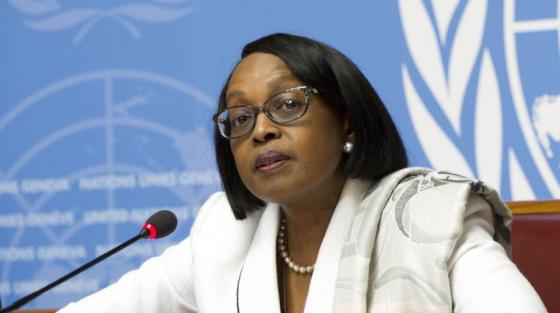World Hearing Day 2023 Message from WHO Regional Director for Africa, Dr Matshidiso Moeti

.... Over 60% of the common ear diseases and hearing loss can be detected and often managed at the primary level of care. However, in most places, access to ear and hearing care continues to be limited to highly specialized centers and clinics.
We join efforts with our Member States to celebrate World Hearing Day on 3 March yearly. It is an opportunity to raise awareness of deafness and hearing loss prevention and promote ear and hearing care worldwide. This year, the theme is “Ear and hearing care for all! Let’s make it a reality.” It is a favourable day to reiterate the message on preventing and addressing common ear and hearing problems.
The burden of ear and hearing problems reflects significant inequalities disproportionately impacting marginalized populations. Globally, over 1.5 billion people live with ear problems and hearing loss, nearly 80% living in low- and middle-income countries. In Africa, an estimated 135 million people have ear and hearing problems. These numbers are rising. At the current rate, it is likely that by 2050 there could be over 338 million people affected by ear and hearing issues in Africa.
We acknowledge recent efforts made to address hearing care. The ongoing support to Kenya to establish a Center of Excellence for Eye Health Clinic, Eye Health and Oral Health is a welcome step. Also, with our support, countries are developing and implementing national strategies for ear health. In 2022, Kenya, Malawi, and Guinea launched and started to implement national ear and hearing care strategies. Furthermore, there is now a regional analysis on ear and hearing care, including country profiles for all Member States. Furthermore, two modules on ear and hearing care management for primary health care workers were developed. They will be integrated into the WHO PEN packages.
Here are the most burning issues affecting patients: Many people with hearing loss do not know how and where to find help or do not have access to the needed services. This greatly impacts on the lives of those affected, their families, and their communities. Moreover, the excessive burden of these conditions is also due to the limited number of ear, nose and throat specialists and audiologists available in the countries. In the African Region, nearly US$ 30 billion are lost due to the collective failure to address hearing loss adequately.
Over 60% of the common ear diseases and hearing loss can be detected and often managed at the primary level of care. However, in most places, access to ear and hearing care continues to be limited to highly specialized centers and clinics. It is important to address these conditions across the continuum of care for people needing these services who must seek specialized services, often in distant hospitals.
Integrating ear and hearing care into primary care services is possible through training and capacity building at this level to address the challenges. It is possible to ensure these services by training a non-specialist workforce that serve as the first point of contact for the communities. To facilitate such integration, we have launched a “Primary ear and hearing care training manual” that is intended to inform doctors, nurses, and other health workers. We have no doubt this manual will benefit people and help countries move towards the goal of universal health coverage.
Therefore, I encourage governments to prioritize ear and hearing care health programmes as part of their noncommunicable diseases and universal healthcare agendas and increase their campaign, political and financial commitment. Increasing newborn hearing screening services as well as the effective accessibility of hearing aid technology, are critical starting points.
To patients suffering from ear and hearing conditions and the public, I recommend that you learn more about these conditions and seek care when needed, including promoting hearing screening services.
I urge all stakeholders to unite and act on the above recommendations, integrating ear and hearing care services into district health systems and primary health care.
Learn more:
The World Report on Hearing has been developed in response to the World Health Assembly resolution, adopted in 2017 as a means of providing guidance for Member States to integrate ear and hearing care into their national health plans. https://www.who.int/publications/i/item/9789240020481
The World report on hearing recommends that WHO Member States take urgent and evidence-based policy action to prevent, identify and rehabilitate hearing loss.
https://www.who.int/publications/i/item/9789240032767
Integrated people-centred ear and hearing care: a policy brief
https://www.who.int/publications/i/item/9789240021594
WHO ear and hearing: a survey handbook
https://www.who.int/publications/i/item/9789240000506
